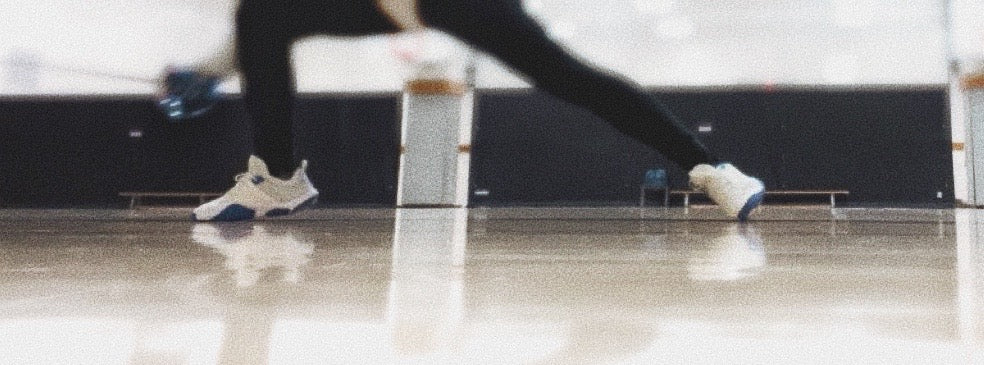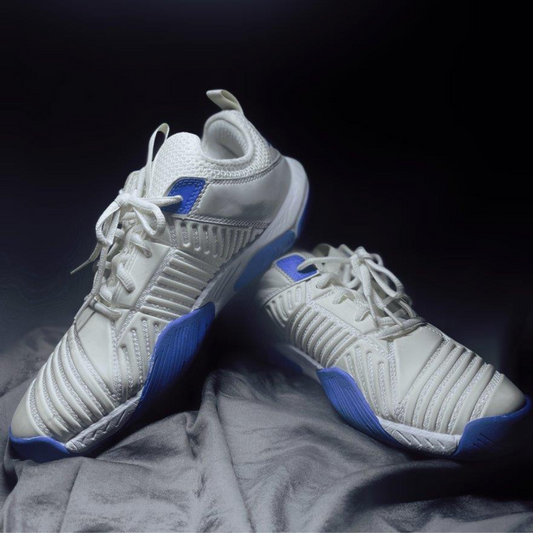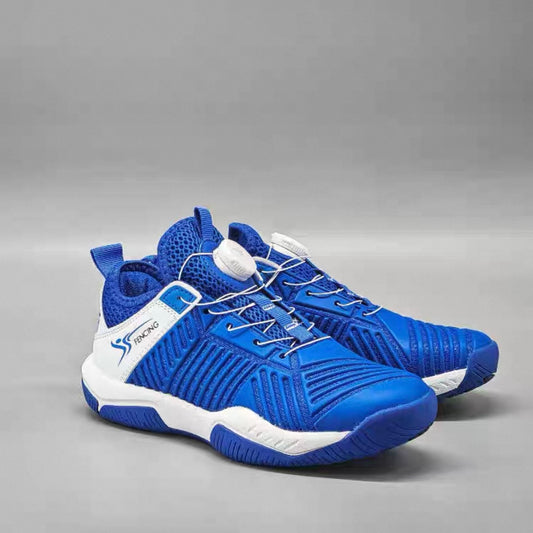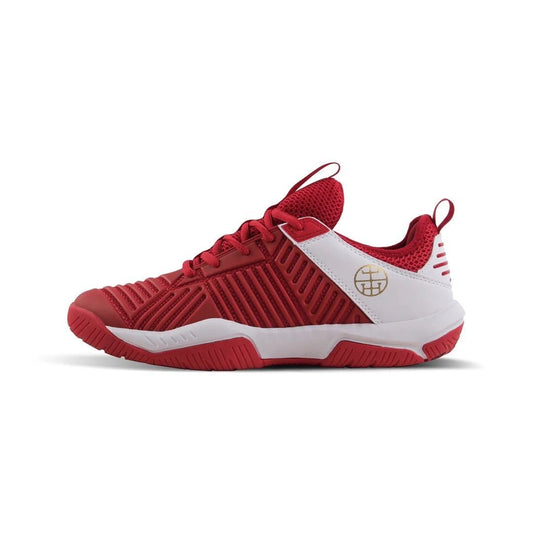When you search for "fencing shoes" in Google, chances are that most of the top listed products are not labeled as fencing shoes specifically. Chances are also high that those shoes have lower price tag than the commonly known fencing shoes.
You might wonder, do I really need to buy fencing shoes to fence? The answer is:
No. You don't have to wear fencing shoes to fence.
Although fencing shoes are specifically designed for fencing sport, you don't have to wear the specially made fencing shoes to fence. This is true especially if you're just a beginner, or buying for your kids who just starts to learn the sport.
If you are just starting out, volleyball or badminton shoes can be good alternatives of fencing shoes. These court shoes have soft soles and can provide the support you need in quick court games.
But don't wear any "sneakers" - avoid wearing running shoes when fencing
The footwear you should avoid when fencing are running shoes. They normally have thick heel that's flat, pointy, sticking out backwards, or even air-puffed, which might lead to injury when you are moving backwards or side-to-side during a fencing game or training.
Fencers generally want a pair of shoes that are low to the ground when fencing, because it helps them "feel" the strip. Fencers also need to make sudden lateral move, which requires their footwear to provide lateral stability to support such sudden change of direction.
Well, can I just wear court shoes for fencing, forever?
Fencing requires sudden changes of direction and the fencing lunge exerts a force of up to 7 times the fencers’ body-weight onto their leading heel. When you level up in your fencing game, you might find that the court shoes might not provide enough support for your fast moves, quick stops or long aggressive lunges - this is when you might want to get a pair of fencing shoes that are specially made for this sport.
With that said, some fencing players just wear court shoes for fencing, and it's really a personal preference.
Alright then, but how are fencing shoes different from other shoes?
Fencing.net has an article that shares the key findings of Nike's 2008 research on fencing shoes. Based on 18 months of research, their research has the following key findings:
- Fencing has among the highest force applied to heel of lead foot in all sports. Up to 7x body weight.
- The trailing foot takes a lot of damage.
- The lunge impacts the foot at an extreme angle: up to 45 degrees
- Fencers spend a lot of time on their forefoot when in preparation
This means that the shoes need to have:
- Good heel cushioning set at an angle to the heel strike of the lunge
- Flexible uppers and sole to be comfortable when in preparation and “bouncing”
- Durable inner edge to deal with foot drag on the lunge, especially with metal strips
- Traction: wood floors and gyms.
Many fencing shoes in the market try to meet the above requirements. Taking Bout15's Professional Fencing Shoes - Coral Series as an example,
- The sole materials provide strong friction force to effectively transfer your thigh strengths into lateral forces on the piste.
- The shoe body materials and pattens provide enough support to fix the shoes on your feet.
- The inner side of the tongue is fixed to the shoe waist. This is to prevent the tongue from slipping when your back foot side is dragged along the piste while doing a lunge.
- The toe surface materials guarantee the surface hardness and toughness to protect your toe and foot bridge while the shoes are sufficiently flexible even for rapid advanced fencing footworks.
- The heel is thickened to cushion the strong impact of landing lunges and rounded to smoothen your front footworks.
Now that you know so much about fencing shoes. Check out Bout15's fencing shoes to see if these are what you need!





